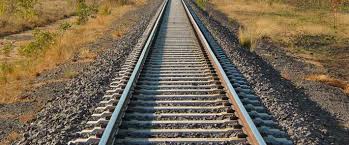Majuba Rail Project
An electrified heavy haul rail line to be completed in 2017
The construction of the Majuba Rail Project in Mpumalanga Province of South Africa, funded in the region of R6b (US$378m), began in May 2013, and is set to be completed in the fourth quarter of 2017.
The 68km corridor is the first large greenfield freight-rail infrastructure project to be undertaken in South Africa since 1986 and will be operated by state-owned Transnet Freight Rail (TFR). The objective is to construct an electrified heavy haul rail line linking the Transnet Freight Rail export coal line with the existing Majuba Power Station rail yard. The rail line which forms part of Majuba Power Station coal supply system will transport 21 million tons per annum of coal in 100 jumbo train wagons.
The project is set to ensure the security of coal supply through logistics solutions at Majuba, Tutuka, Camden, Groovlei, Kendal and Hendrina power stations to cater for a throughput potential of 32 million tons a year of coal by rail. The coal will be unloaded at the terminal by the upgraded coal tippler system. The initiative was necessitated by Eskom’s desire to change transportation of coal from road trucks to rail transportation with envisaged economic, environmental and social benefits.
The 68km line begins about 8km west of Ermelo, in Mpumalanga, with the take-off accessible from both directions of TFR’s existing coal corridor to Richards Bay.
The project scope of works entails the construction of 102 culverts/ nine cattle creeps, 39 agricultural underpasses, and overpasses, 16 bridges, as well as one incremental launch bridge (313 m).
Vaal River Incremental launch bridge
The incremental launch bridge is one of the most highly mechanized erection methods used in bridge construction. The construction methodology entails manufacturing the superstructure of the bridge in a prefabrication area behind one of the abutments, each new segment is concreted directly against preceding one and after it has reached required design strength, it is moved forward by the length of one segment.
The earthworks construction consisted of cut to fill, cut to spoil and layer works activities totaling 8 million cubic metres of material and excess of 50 million cubic metres/km of overhaul.
Challenges
One of the many challenges faced during construction of the piers was diversion of the river in stages to gain access for the pier and abutment bases, and for that the construction program called for the piers to be cast during the rainy season (September 2013- January 2014), making construction almost impossible, with extremely high water levels recorded during the period after 485 mm of rain was experienced.
In addition, maintaining the construction programme due to the high rainfall season posed challenges in erecting a temporary river crossing for access, working in below zero degree temperatures as well as obtaining high 48 hour strength (35MPa) to achieve 7 day cycle.
Positive spin-offs
The project has benefited the local communities in terms of employment creation as well as skills transfer. Eskom and Transnet entered into an SD & L (Supplier development and localization as outlined in their programme with Aveng Grinaker- LTA. The two focus areas of the SD & L programme included procurement and skills transfer to the local communities.
Professional Team
Client Eskom and Transnet
Main Contractor Aveng Grinaker- LTA Civil Engineering
Architect TCP- Transnet Capital Projects
Sub-Contractor Amsteele Systems

